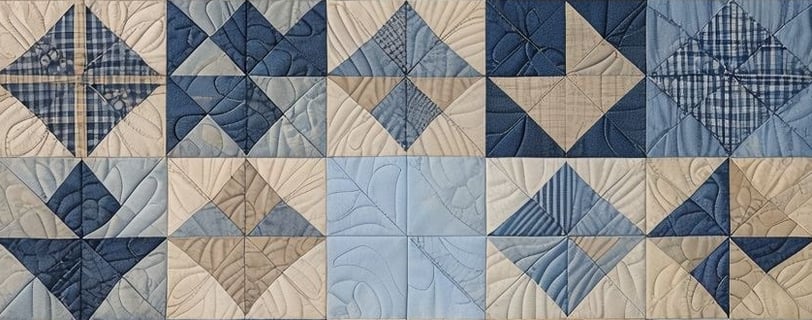The Beauty of Imperfection
Dr. Wallace
12/28/20243 min read


When I was preparing the last episode, I wanted to tell a story about connecting our piecemeal ideas, events, and stories in our past to reinvent something so that we can produce something meaningful and actionable for moving forward.
I started the online search with the word “weave” because I wanted to tell a story about weaving ideas together. After a few rounds of word searches, I saw the word “quilt”. I had never heard much about quilting before, but it drew my attention.
The history of quilting can be traced to ancient times. It provided warmth for basic needs. Quilted clothing had been used as an added layer of comfort and protection under armour. Quilting become a fashionable symbol among the wealthy for it is rich in colours and patterns. A group of quilters gathered to produce quilts as social events and fostered a sense of community. When fabric was scarce, quilters used patchwork techniques to patch holes over worn cloths. Each scrap fabric told a story and was weaved together into a larger narrative by the quilters. In some traditions, people would quilt a duvet for a newborn baby with fabrics donated by their neighbours, which represented the blessings and love of the baby from different families.
The craftsmanship of quilting was wane at times but it reemerged again during human’s hard times – wars and economic recessions. Quilters won’t stop creating during dire circumstances. They thrived, in history, when humans experienced the hardest and challenging times. Quilters are capable of retelling human stories by recreating what is available surrounding us from our past.
Behind the episode Become a Quilter: Weave Your Fragmented Stories into Meaningful Patterns is a story about a woman I know. She is sick. But she is more vibrant than before. People may only see restraint in her situation. But, like a quilter breathing new life into the old fabrics, she reinvents her limitations to become meaningful patterns of positive inspirations, aspirations and motivations. These patterns form a beautiful picture of the quilt that is rich in purpose and filled with resilience.
Quilting patterns are given names related to the quilters’ context, like palm trees, the Rose of Sharon, historical events, farm equipment and household utensils, or biblical stories. The pattern with the names becomes known and exchanged among quilting communities. The names were reinterpreted in different communities that reflect more about their environment and living, which gives a fresh meaning to the pattern.
The woman shares her stories and connects with people who are facing adversity. When people think that she is in scarcity, she has plenty of resources more than our imagination. She sees all her encounters and happens as a creative resource for meaningful stories. She becomes resourceful and gets rid of the fear of scarcity. Her meaningful stories impress and motivate others who are in their most challenging circumstances. As she repeats the process, she creates her unique pattern that can be recognized, remembered, reinterpreted and reborn.
This woman reflects the character of a quilter. She has a time paralyzed by fear and uncertainty. She starts to reframe her situation and creates something new, out of her struggles. In her difficult time, she is free to create a new story that belongs to her. Her creation is not perfect. But the imperfection is the beauty of humanity marks. In a quilt, the patterns seem the same, but when you look closer, they are slightly different.
We are in an imperfect world. And our work will never be perfect. It is very human. Our imperfect work is perfect to reflect how humans live under adversity to create meaningful patterns that can move people, connect people, and tell stories. We can dissect and split what was given to us to create something unique and serve different people according to their specific needs. And we can combine small pieces of ideas to form a bigger one. Imperfection gives us the freedom to deconstruct what is given to us and reconstruct it into something unique, creating impactful solutions tailored to diverse needs.
Are you ready to look into your scrap basket and start weaving your piecemeal ideas into something imperfect but meaningful to the people you care about?
Dr. Wallace
I am an architect by training and expanded my knowledge in management and business administration. I help people who are feeling unsatisfied and unfulfilled with their work and life; who are at a crossroads to break out of their comfort zone; and, who are facing the challenge of where to go and what to do next. I help them to re-innovate their edges to shine in the new arena.
© 2024. All rights reserved.
